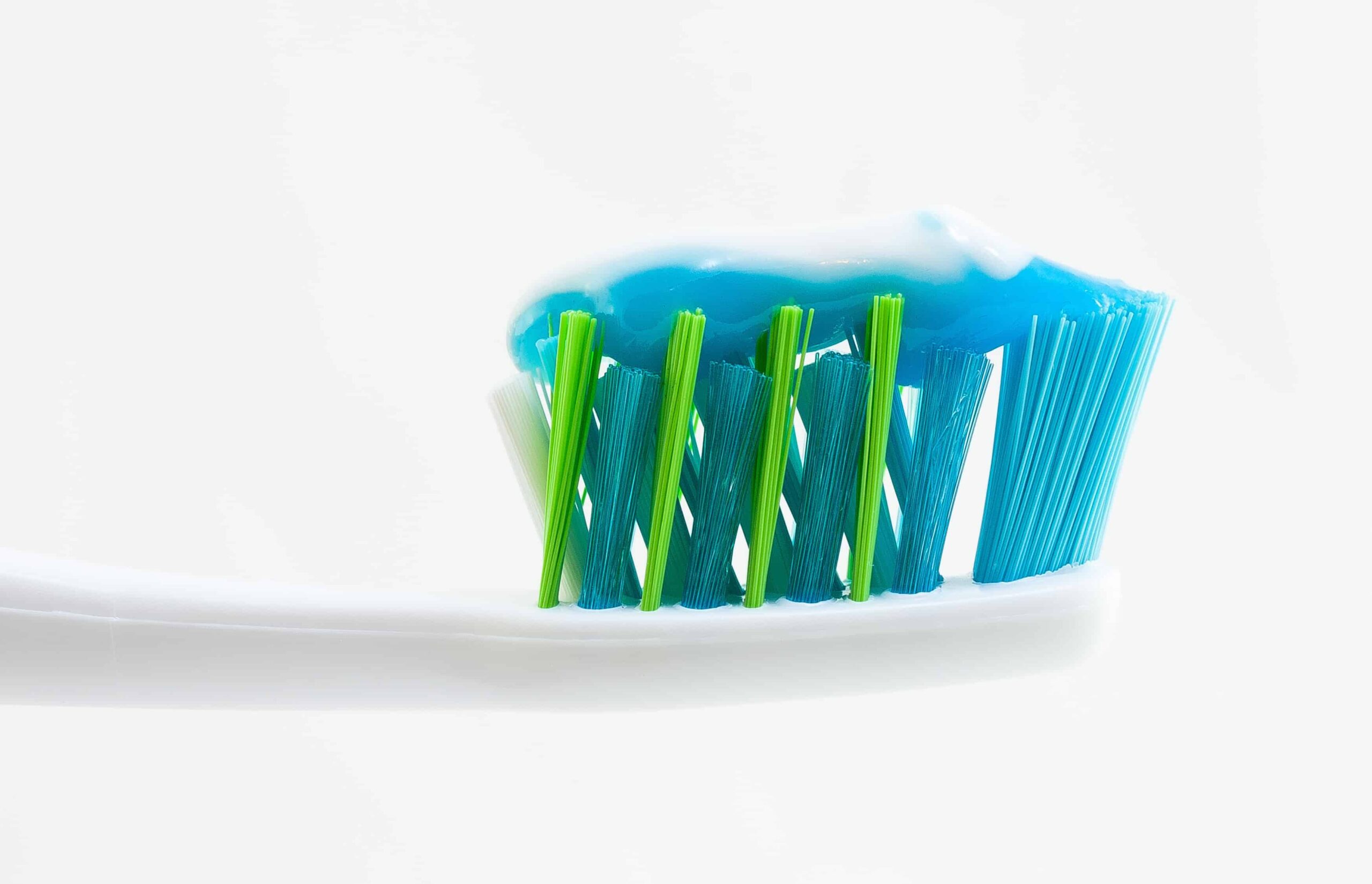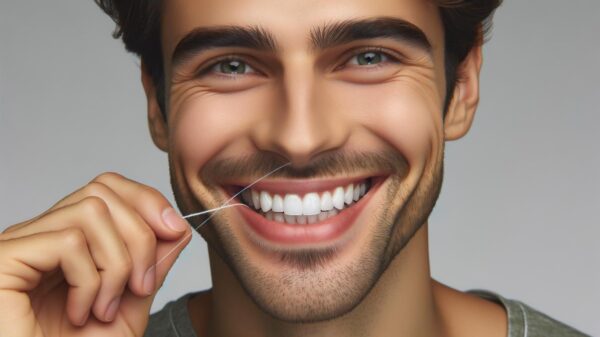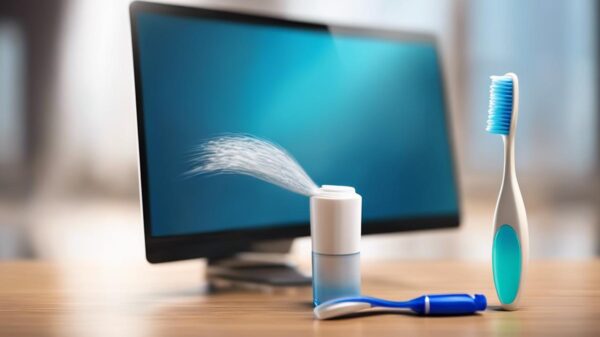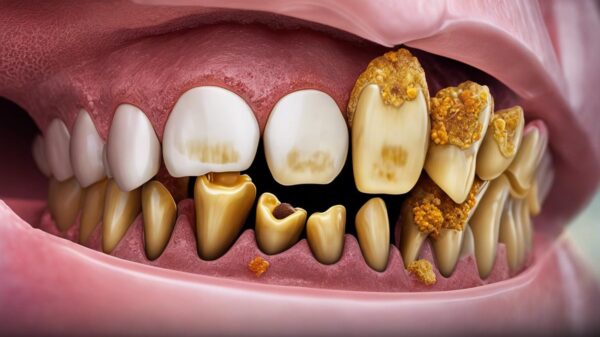How Do I Disinfect My Toothbrush?
Brushing your teeth is an imperative part of a daily routine. However, have you considered that you could be doing more harm than good by brushing your teeth with a dirty toothbrush? Because we use toothpaste to brush our teeth, we tend to forget that toothbrushes need some attention too. The germs that collect on your toothbrush over the course of time can be damaging to both your oral health and the overall health of your body!
So what does this mean? Is it really necessary to disinfect a toothbrush? In short, yes. It is important to disinfect your toothbrush at least once a week. This is in addition to replacing it every three months. Today, we are sharing a complete guide to disinfecting a toothbrush in hopes that you will add this important task to your weekly to-do list.
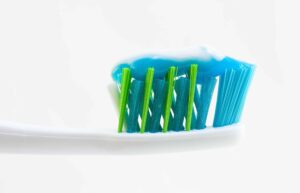 Does disinfecting your toothbrush weekly sound like a lot of work? Trust me, the work is worth the reward. Once you learn of the various strains of bacteria that live in your toothbrush, you will be running towards your bathroom! Taking care of your toothbrush will, in turn, enable you to take better care of your teeth and gums. This will impact your overall health in a way that will make the 15 minutes spent weekly on this task well worth the effort.
Does disinfecting your toothbrush weekly sound like a lot of work? Trust me, the work is worth the reward. Once you learn of the various strains of bacteria that live in your toothbrush, you will be running towards your bathroom! Taking care of your toothbrush will, in turn, enable you to take better care of your teeth and gums. This will impact your overall health in a way that will make the 15 minutes spent weekly on this task well worth the effort.
Why Should You Disinfect a Toothbrush?
It is likely that you have never considered disinfecting a toothbrush. Many of us pick up a new toothbrush at our bi-annual dentist appointment and never think twice about it. Have you thought about what a toothbrush really does?
The job of your toothbrush is to clean leftover food and debris from your teeth. In the process, it also gets rid of harmful germs and bacteria that collect and grow in your mouth. Gross, right? After we use our toothbrush to rid our teeth of this bacteria, we simply rinse the toothbrush in the sink. Then we set it aside until the next time we use it. Where did the bacteria go? Unfortunately, much of it is still trapped between the bristles of the very same brush you will clean your teeth with again in a matter of a few hours.
Disinfecting your toothbrush is important year-round. However, it is especially important to be vigilant of this task during the cold and flu season. Keeping your toothbrush squeaky clean will guarantee that you aren’t messing around with any extra bacteria that could cause you to contract a nasty cold virus.
The American Dental Association recommends replacing your toothbrush every three to four months. You should also sanitize it approximately once a week to get rid of any harmful bacteria that are hanging around. Proper storage of your toothbrush will also help you avoid bacteria taking over your otherwise clean toothbrush. It is important to store your toothbrush in an upright position in which it can air dry. Storing your toothbrush in a closed container or cabinet provides more potential for the growth of harmful bacteria.
Problems Caused by Dirty Toothbrushes
Disinfecting a toothbrush is about more than simply having the peace of mind in knowing that it’s clean. There are many problems that can be caused by a dirty toothbrush which includes various forms of viruses, colds, and infections. Thankfully, many of these dangers can be avoided by following proper sanitation and storage protocol. Some of these types of bacteria may sound foreign, but you will likely be well aware of the problems they can cause.
E. Coli
E. Coli is a bacteria that is often found on toothbrushes. This nasty bacterium causes diarrhea and other intestinal issues. Something that no one wants to mess around with!
Porphy-Romonas Gingivalis
This type of bacterium is responsible for causing periodontal (gum) disease. It is often hard to stop symptoms of gum disease once they present themselves. Simple tasks like brushing and flossing, when done improperly, can cause abrasions or cuts. These lacerations are unfortunately the perfect place for this strain of bacteria to infiltrate.
Herpes Simplex
Herpes Simplex is likely the most common virus found on toothbrushes. It is responsible for causing cold sores. Thankfully, cold sores are a relatively easy problem to solve. However, they can cause great discomfort as well as adding an unsightly sore to your face.
Mutans Streptococcus
This strain of bacteria is likely the most damaging to your teeth. Mutans Streptococcus can cause erosion of the enamel (protective outer layer) of your teeth. This, in turn, will lead to tooth decay and other types of oral disease.
Beta-Hemolytic Streptococcus
Most common during cold and flu season, this bacteria is responsible for strep throat. Strep throat can be highly contagious and very painful. After multiple infections, it can even lead to potential surgeries.
How do I Disinfect my Toothbrush? 6 Ways to Disinfect Your Toothbrush
Disinfecting a toothbrush doesn’t have to be a time-consuming task. Setting aside 15 minutes in your weekly schedule is well worth it to make sure you are taking care of your health! There are several ways in which to disinfect your toothbrush. Today, we will cover just a few.
1. Boiling Water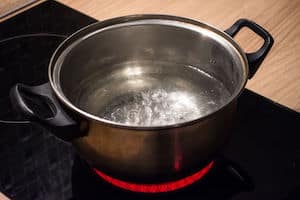
Perhaps the oldest method of toothbrush sanitation is boiling water. Bring water to a rolling boil before adding your toothbrush and then set a timer for 3 minutes. Carefully remove your toothbrush from the water and let it cool down. Be warned that the hot water used in this method can be damaging to your toothbrush so be sure to inspect it for signs of damage before use.
2. Dishwasher
One of the easiest methods in which to disinfect your toothbrush is to throw it in the dishwasher! The silverware rack is the perfect spot to keep it contained during the cleaning. Just run your washer on the hottest cycle available and skip the soap. This method, like boiling water, can cause potential damage to your toothbrush. Be sure to give it a good inspection before you brush!
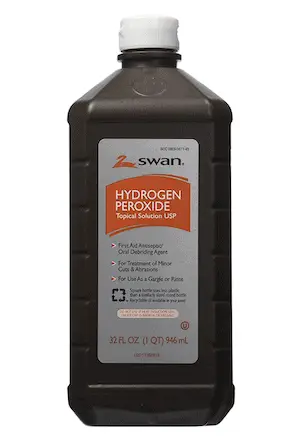 3. Hydrogen Peroxide
3. Hydrogen Peroxide
If you are concerned that you will forget to sanitize your toothbrush weekly, choosing an alternative like hydrogen peroxide may be wise. Simply store your toothbrush in a small container of hydrogen peroxide and rinse it before use each day. After you brush, be sure to replace the hydrogen peroxide in the container with fresh liquid to keep those germs at bay.
[button target=”_blank” hover_type=”default” text=”Check Price” link=”https://amzn.to/36d01Zv”]
4. Mouthwash
Using an antibacterial mouthwash is another easy alternative. Soaking your toothbrush for 15 minutes each week will get rid of bacteria and germs that are stuck between the bristles. As a bonus, you’re left with a minty fresh toothbrush! Just be sure to rinse your toothbrush thoroughly before the next use.
5. Denture Cleaner
Denture cleaner is easily available in stores and is a great way to disinfect a toothbrush. This antibacterial cleaner is formulated to break down food particles and other debris that is trapped between the bristles of a toothbrush. In addition, this particular is made specifically to kill bacteria that are commonly found in the mouth.
6. UV Sanitizer
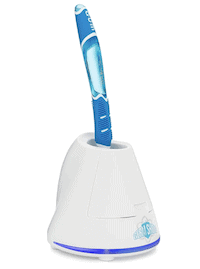 If you’re serious about sanitation, a UV toothbrush sanitizer may be just the thing! A combination of dry heat and steam work together to rid your toothbrush of nasty bacteria. This sanitizing gadget can get pricey! (And to be fair, experts say that simply soaking your toothbrush in an antibacterial mouthwash will achieve results that are just as good.)
If you’re serious about sanitation, a UV toothbrush sanitizer may be just the thing! A combination of dry heat and steam work together to rid your toothbrush of nasty bacteria. This sanitizing gadget can get pricey! (And to be fair, experts say that simply soaking your toothbrush in an antibacterial mouthwash will achieve results that are just as good.)
When to Disinfect a Toothbrush
Ideally, you should disinfect a toothbrush once each week. However, there are other times when it is beneficial to give it a little extra attention.
After Sickness
When recovering from a virus or cold, always disinfect your toothbrush. (Be sure to sanitize the toothbrushes of the other members of your household, too.) Because a toothbrush holds on to bacteria, it could cause your cold to last longer than it needs too! Dirty toothbrushes could also be the cause of a virus spreading throughout your entire household.
Toothbrush Mix-Ups
We’ve all been there. It’s late at night. You’re about to fall asleep and you realized (too late) that you are brushing your teeth using someone else’s toothbrush. It is absolutely necessary that you disinfect both your toothbrush and the toothbrush you accidentally used! Bacteria passed from one person to another can cause unnecessary colds and infections.
Vacation
It is always wise to disinfect your toothbrush after returning home from a trip. New environments and experiences can expose you to bacteria you are not otherwise accustomed to. Jet Lag can also leave you exhausted which causes your body’s natural defense system to be weakened. Plus, that toothbrush cover you used…not so helpful in preventing bacteria.
Alternatives to Disinfecting
There are, of course, alternatives to disinfecting a toothbrush. Although sanitizing your toothbrush weekly is the most effective economically, it may not fit in your busy schedule.
New Toothbrush
If disinfecting your toothbrush consistently is proving to be a challenge, it may be wise to simply switch to a new toothbrush more often than suggested. Luckily, there are many cost-effective brands of toothbrushes available which make this method less pricey than it once was.
However, before you waste your money, try a sanitation method like the mouthwash method listed above. Developing this simple habit can save you hundreds of dollars you would otherwise waste on new toothbrushes.
Ways to Avoid Dirty Toothbrushes
Although bacteria on your toothbrush are unavoidable, there are ways to diminish the growth of harmful germs. Following these steps will guarantee that your toothbrush is as clean as it can possibly be!
Rinse Thoroughly
Most of us give our toothbrush a rushed rinse both before and after we brush our teeth. However, don’t rush this step! Rinsing the toothbrush thoroughly under hot water both before and after brushing will get rid of any lingering debris which leads to the growth of bacteria or mold.
Don’t Share
This should go without saying, but sharing a toothbrush is a horrible idea. In fact, sharing toothpaste is even unwise! Cross-contamination from another person’s toothbrush could transfer bacteria that your toothbrush otherwise wouldn’t have. It’s better to keep your germs to yourself, no matter how much you love the other person!
Location, Location, Location
As you can assume, storing your toothbrush right next to the toilet is not a wise idea. When a toilet is flushed, germs and bacteria are released into the air. If your toothbrush is conveniently stored on the countertop right next door, you can imagine where they land. Keep your toothbrush away from the toilet. It’s just the right thing to do.
Let it Breathe
Storing your toothbrush in a well-ventilated area will allow it to dry more quickly. A damp toothbrush is the perfect breeding ground for bacteria and germs, you want the bristles to dry as quickly as possible. A toothbrush holder stored on your countertop (away from the toilet) is often the best option.
Although there are many types of decorative toothbrush holders available today, it is wise to choose one with an open cup style that you can easily clean and disinfect. After all, what’s the point of sanitizing your toothbrush if you store it in a dirty container?
Keep it Upright
A toothbrush holder also enables you to store your toothbrush in an upright position. Aside from the benefits of proper ventilation, upright storage also prevents cross-contamination. Cross-contamination can occur when your toothbrush comes in contact with any other surface.
Final Thoughts
Keeping your toothbrush clean is an important part of a healthy oral care routine. When you take a few extra minutes to disinfect your toothbrush each week, you are investing in your health. Whether you decide to boil it in water, stick it in your toothbrush, or simply soak it in an antibacterial mouthwash, sanitizing will always be well worth the effort. Disinfecting your toothbrush can help prevent many types of infections, cold sores, colds, and viruses from interrupting your life!
Along with the weekly sanitation of your toothbrush, it is important to follow proper care protocol. Keeping your toothbrush in a well ventilated, upright location will allow it to completely dry between each use which will create an environment in which bacteria will not thrive. In addition, spending a few extra minutes to rinse your toothbrush thoroughly before and after each use will rid the bristles of leftover food and debris which will eventually lead to the development of more bacteria.
Following these simple steps and developing a habit of sanitation, in addition to using a new toothbrush every three to four months, is part of a healthy dental care routine. This, in addition to brushing your teeth twice a day, flossing each evening, and maintaining your bi-annual dental exams and cleanings, will enable you to have the healthiest teeth possible.
Related Questions
Do toothbrush covers actually keep your toothbrush clean? You may think that that little plastic cover you place over the bristles of your toothbrush is doing you a favor. However, it is actually doing the complete opposite! Although it is good to help prevent cross-contamination will transporting it, it should only be placed on the toothbrush one the bristles are completely dry.
Upon arrival at your destination, store your toothbrush upright in a cup on the countertop. If this is not an option, store your toothbrush laying down on the toothbrush cover, but do not close the cover over the bristles. An enclosed area like a toothbrush cover is a breeding ground for all types of nasty bacteria.
What is the best place to keep a toothbrush? The most convenient location in which to keep your toothbrush is in the bathroom. However, location is key. It is important to store your toothbrush away from the toilet as flushing a toilet can release both bacteria and germs into the air. The best alternative is an open cup style toothbrush holder that is easily found in stores or online. A cheap alternative is to simply use a small mason jar which can be sanitized each week in the dishwasher as a further precaution against germs.
Why is it bad to share a toothbrush? Yes! Besides the obvious reason of it just being gross, sharing a toothbrush is a horrible idea. Sharing a toothbrush allows for the transfer of bacteria and germs from one person to another. A germ that you may not be exposed to suddenly has a home in your mouth! How gross is that?
For the same reasons, it is also wise to have your own tube of toothpaste to avoid possible cross-contamination from the bristles of a toothbrush touching the toothpaste tube. If you are in a pinch without a toothbrush, it is better to use your finger or a clean washrag, along with toothpaste, to clean your teeth until you are able to obtain your own toothbrush.
Click here for more dental hygiene tips!



